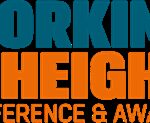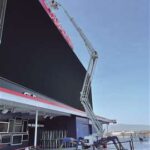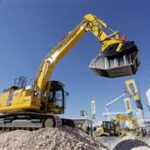How Much Does a Scissor Lift Weigh? What You Need to Know About Weight and Size
If you’ve ever seen a scissor lift at a construction site, warehouse, or any place that requires working at height, you know they’re designed to make moving people and equipment up and down a lot easier. But here’s the thing: when you’re selecting a scissor lift, weight is a big factor, and it can vary significantly depending on a few different factors.
Why Does Scissor Lift Weight Matter?
Scissor lifts come in all shapes and sizes, and the weight is one of the key differences. For instance, a heavy-duty model used on construction sites will almost always weigh more than a smaller, electric model that’s designed for indoor use.
Scissor Lift Weight by Size:
Generally, the bigger the scissor lift, the more it weighs. Here’s a quick look at the typical weight ranges based on size:
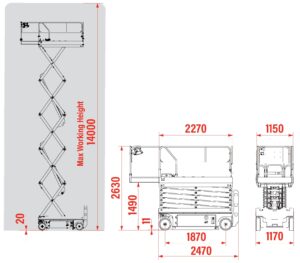
Indoor Scissor Lifts:
- 19-foot scissor lift: Around 2,700 lbs to 3,500 lbs
- 26-foot scissor lift: Around 4,000 lbs to 5,000 lbs
- 32-foot scissor lift: Around 5,400 lbs to 6,500 lbs
- 40-foot scissor lift: Around 6,000 lbs to 7,000 lbs
- 46-foot scissor lift: Around 8,000 lbs to 9,000 lbs
Outdoor Scissor Lifts:
- 26-foot scissor lift: Around 6,300 lbs to 7,000 lbs
- 32-foot scissor lift: Around 7,300 lbs to 8,000 lbs
- 40-foot scissor lift: Around 15,000 lbs to 17,000 lbs
- 50-foot scissor lift: Around 17,000 lbs to 19,000 lbs
Why Weight Matters When Choosing a Lift:
When you’re picking out a scissor lift for your project, you’ll need to think about weight. For example, an overly heavy lift could damage floors if you’re working indoors, while a lighter model may not be able to handle rough outdoor terrain. Here are a few factors to keep in mind when choosing the right lift:
- Load Capacity: Larger lifts typically have a higher load capacity, which makes them more versatile for various tasks on the job site.
- Transportation: Moving a scissor lift from one place to another can be tricky. The larger the lift, the harder (and more expensive) it is to move. Be sure to plan ahead for how far and where you’ll need to transport it.
- Number of Workers: Lighter lifts may only be able to support one person safely. If you need more workers, a heavier-duty lift might be necessary.
How to Know the Weight of Your Scissor Lift:
If you already own a scissor lift, check out the spec sheet to find out its exact weight. If you’re in the market to buy or rent one, ask the seller or rental company for these details. Not gathering this info beforehand can lead to incorrect usage of the equipment, which could cause damage to the lift—or worse, an injury.
How Will You Use the Scissor Lift?
Understanding what you’ll be using the lift for is key in choosing the right size. Here are some of the most common uses for scissor lifts:
- Carrying Workers: Lift workers to different heights for various tasks.
- Lifting and Moving Materials: Move items like drywall to higher levels.
- Working at Height: For tasks that require working above ground level.
- Warehouse Use: Scissor lifts are perfect for stocking inventory at height.
- Business Tasks: From hanging signs to changing light bulbs.
- Landscaping: Reach high tree branches for trimming or removal.
Some lifts are versatile enough for multiple tasks, while others are designed with a single purpose in mind.
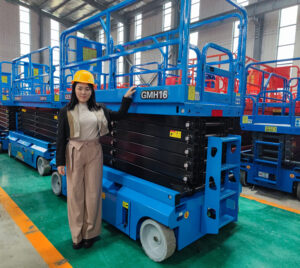
How to Pick the Right Scissor Lift
Here are the key factors to consider when choosing a scissor lift:
-
Height and Capacity
First off, figure out the height you need to reach and how much weight the lift will need to support. Remember that the platform height refers to how high the lift platform extends, while the working height is how high a worker can reach with arms extended. If you’re carrying equipment, make sure the lift’s weight capacity is up to the task. -
Platform Size
The platform needs to be large enough to accommodate both workers and equipment. Think about how much movement will be needed on the platform and whether there’s a risk of tools or materials falling off the edge. -
Power Source
Scissor lifts are powered by electricity, batteries, or diesel. The right power source depends on where you’ll be using the lift. Electric and battery-powered lifts are great indoors, while diesel models work better outdoors due to their higher emissions. -
Mobility
If you need to move the lift around frequently, make sure it’s suited to the terrain you’ll be working on. Whether you’re on a smooth warehouse floor or a muddy construction site, the wheel system and tires should be up to the task. -
Safety Features
Look for lifts with built-in safety features like guardrails, emergency stop buttons, and non-slip surfaces to keep workers safe.

